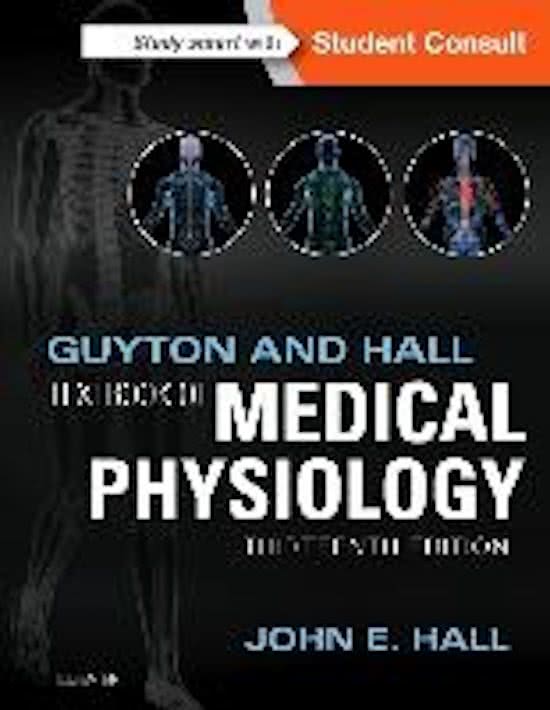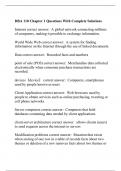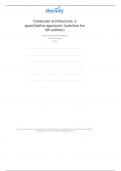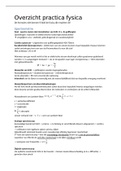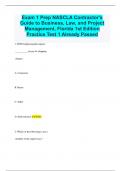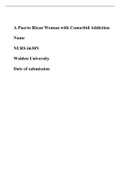1. ANTIBIOTICS
MECHANISMS OF ACTION :
We classify by chemical structure, spectrum of activity
and mechanism of action. Narrow spectrum means
only gram pos and gram neg. Broad spectrum means
both gram postive and negative. We started in history
with narrow spectrum (penicillin) and then we got
broad ones (1950: amphicillin).
LECTURE
History of antibiotics:
• Paul Ehrlich and Sahachiro Hata in 1910
developed salvarsan (arsphenamine) against
syphilis)
• Alexander Fleming in 1928 came back from
holiday to see penicillum mould growing on
plates with staphylococcus and no bacteria
close to the mould. Penicillum prevents
bacterial growth but he could not isolate the
molecules
• E. Chain & H. Florey produce larger quantities.
• 1940: first patient treated with penicillin
Bactericidal: kill VS. Bacteriostatic: stop growth Blue square means we have now resistance
Some decrease the growth rate and some impair developed. Amoxycillin + clavulanic acid = augmentin
nutrients for that much that they die. Penicillin is = broad range antibiotic with spectrum deficit in non-
bactericidal and turns growth into death immediately. fermenters (p. aeruginosa, cinetobacter,
Others like tetracyclin are bacteriostatic and only stenotrophomas). Green = narrow spectrum, red =
inhibit growth. Impaired immunity people need the broad spectrum.
bactericidal. Often the first two groups
(aminoglycosides and beta lactams) are used for acute Antibiotics work since there are diffrerences between
septicemia (UTI). eukaryotes (moulds, humans) and prokaryotes. They
differ in presence of peptidoglycan, structure of
ribosomes and DNA/RNA and metabolism. We can
divide into five targets:
1. Bacterial cell wall: prevent cross linking and
cause weak cell walls and lysis, no effect on
, existing pep layer and effective only for Prokaryotes: lack mitochondria, golgi, different
growing cells. (beta lactam and glycopeptides) ribosomes 70S 80S, cell wall (like plant cells), breathe
a. Penicillins: peptidoglycan is through cel membrane.
disaccharide chains next to eachother • nucleoid: no histones
and enzymes (trans- • plasmids
carboxypeptidase) can make cross • no nuclear envelope: transcr + translation
links between them (Penicillin binding together
protein) and they have an open spot • cytoplasmic membrane no cholesterol
which can be blocked by penicillin
(bacteria dies by explosion due to SHAPES AND FORMS
osmotic pressure)\ Bacteria can be distinguished based on different
b. Vancomycin: blocks production of things. Firstly there are the shapes/morphologies:
peptidoglycan by forming a cap over
peptide side chains so that they
cannot form side chains. Cannot pass
through the outer membrane porins
of the gram negative therefore works
only on gram positive = narrow
spectrum antibiotic.
2. protein synthesis: prokaryote ribosomes 70S
(sievenberg units) and eukaryotic are 80S.
Thus drugs can selectively target translation
3. plasma membrane: only one drug!!
a. polymyxin (colistin) against gram GRAM POSITIVE VS. GRAM NEGATIVE
negatives, very toxic used as Secondly we can divide based on gram staining.
prevention in a cream on one spot or Bacteria are put onto a slide stained with crystal
to selectively kill in the gut (since it is violet (has iodine) then excess stain is washed of by
not taken up) acetone based decolorizer and water. Safranin – red
4. metabolic pathway inhibition: effective when counterstain is added to the decolorized cells –
metabolic processes of pathogen and host process of 10 minutes.
differ, metabolic antagonist. • Gram positive = purple because the stain gets
a. Trimethoprim-sulfamethoxazol, has trapped in the peptidoglycan layer
different words along the world Some have fibers of teichoic acid that stick
out of the peptidoglycan layer.
Special type of gram positive is mycobacteria
(TBC) they do not have an outer membrane
and thus are gram positive but they are acidic
so they cannot be stained.
• Gram negative = red because the thin
peptidoglycan layer does not retain crystal
violet stain.
Complex outer wall made of lipopolysaccharides
(porins), lipoproteins and phospholipids. Between
outer and inner membrane there is a periplasmatic
space (both types have this) BUT gram negatives of
some types have beta lactamase here which breaks
down penicilline and beta lactam. Also cell wall
contains endotoxin= + second phospholipid layer
(lipopolysaccharide)-> antigen, therefore we can
5. nucleic aicds synthesis inhibition: identify. Rough (not full antigen) smooth (full length
a. fluoroquinolones (ciprofloxacin): act antigen)
against prokaryotic DNA
2. BACTERIA
, bacteria can adhere. This they can do by adhesins,
many of which are present at the tips of fimbriae
(pili) and bind tightly to sugars on the target tissue,
these we call lectins. Other bacteria secrete proteins
that bind components of the ECM of epithelial cells:
fribronection/collagen/laminin and these are called
MSCRAMMS (microbial surface components
recognizing adhesive matrix molecules). – Same book
on clinical key has each mechanism per bacterium.
After adhesion we get colonization and after this we
get inflammation, this increases tight junctions
between cells through which bacteria can reach the
blood and spread through the body. Some can also
If gram staining is not used or mycoplasma then we survive in macrophage (salmonella) and travel in that
use acid fast staining. manner.
The pathogenic actions of bacteria are the following:
• Tissue destruction: bacterial growth produces
byproducts (acid, gas) that are toxic to tissue,
many bacteria also release extra degradative
enzymes (for their food and spread)
• Toxins
o Exokines: bacterial products that
directly harm tissue or trigger
destructive biological activities→ cell
lysis and promotion of excessive
stimulation of innate immune
response
o Exotoxins: proteins produced by gram
positive and gram negative = cytolytic
enzymes and receptor binding
proteins that alter cell function or kill
cell.
o Endotoxins: only by gram negative:
OTHER CLASSIFICATIONS
Aerobic: need oxygen bind to cell wall receptors induce
Anaerobic: do not need oxygen cytokine production
Facultative aerobic: can or cannot use oxygen
micro – aerophile: needs small and distinct ETIOLOGY OF CASE COMPLAINTS - Look up the dutch
concentration of oxygen. national guidelines and treatment in the case
UTI: All diagnosed by dipstick test (measure esterases)
Acidogenous: can form acid from food source or nitrite test. After that is microscopy to be sure
Acidophile: can grow wel lin low pH which one it is. Culture is second best. Only exception
Alkalophile: can grow well in high pH is streptococcus agalactiae (group B streptococcus) –
nucleic acid based or culture.
Psychrophile: 5-30 degrees celsius 1. Enteric, usually gram-negative (rods/bacilli)
Mesophile: 15-50 deg. celsius aerobic bacteria (most often)
Thermophile: 50-60 deg celsius o Escherichia coli MOST 75-95%– rod
facultative aerobe (similar to
+ add growth characteristics salmonella), lactose fermenting. From
commensal bacteria.
WAY OF INFECTION – PATHOGENESIS ▪ sulfonamids
Firsth things first the bacteria have to get into the ▪ antibiotics: amoxicillin,
body by any route (ingestion, inhalation, trauma, ciproflaxicin, nitrofurantoine
needlestick, bite of animal, sexual transmission). Then o Other enterics: Klebsiella, proteus
we get colonization, different bacteria choose a mirabilis, enterobacter, pseudomonas
different location in the body depending on their aeruginosa
characteristics. It also depends on to which cells the 2. Gram-positive bacteria (less often)
, o staphylococcus saphrophyticus – diagnosed by microscopy of leukocytes and culture.
coagulase negative Enterotoxic E-coli are shown with PCR specific on the
▪ trimoxazolone toxin.
o staphylococcus aureus – coagulase Most types of acute diarrhoea are self limiting
positive Can be viral: norovirus and rotavirus, astrovirus,
o enterococcus faecalis (group D adenovirus
streptococcus) Parasitic: Giardia, cryptosporidum
o streptococcus agalactiae (group B Bacterial:
streptococcus) Gram negative:
• salmonella (rod) – facultative aerobe, oxidase
Wound infection: Diagnosed by culture, organisms can negative, catalase postive same for all
also be seen in microscopy. Mostly caused by enterobacteria.
commensal bacteria. o Quinolone, macrolid, cephalosporins
• Gram positive not always necessary
o staphylococcus aureus – facultative o antidiarrhoeals - imodium
anaerobic, normal in upper airways so • campylobacter jejuni (spirochete) – gram
breathe into a wound = bad. → pus. negative reduce oxygen increase CO2, best at
Grows as a white or golden white dot 42 deg, self limiting
(golden maybe even). Commensal • shigella (rod)
flora of nose and thorat. 25% of • Shigatoxin producing E. coli (rod)
population is permanent carrier, 25% • Helicobacter pylori (vibrio)
intermittent carriers. 50% is not • Vibrio Cholerai (rod)
carrier. Number 1 pathogen in the Gram positive:
hospital of wound infections. It is also • clostridium difficile
known outside hospital in: furuncle
(boil)-not treat, carbuncle-treat,
pneumonia-treat, toxic shock
syndrome-treat, food poisoning-not
treat).
▪ NOT penicillin (most are also
penicillin sensitive), choice is
flucloxacillin (beta lactamase
stable, so inhibits beta
lactamases) better than
amoxicillin + clavulanic acid
since if needed in high doses
amoxicillin is toxic and
flucloxacillin is not.
▪ IF MRSA: vancomycin, since
all penicillin and
cephalosporins and
carbapenems are not
possible.
o streptococcus pyogenes
• Gram negative = in larger area burn wounds
etc.
o e. coli
o pseudomonas aeruginose
(coccobaccil) – aerobic but also
anaerobic. opportunistic
o enterobacter (rod=baccillus)
Diarrhoea; Diagnosis depending on cause.
Shigatoxin/clostridium toxin by ELISA antibody testing.
Rest of bacteria is done by culture. Heliobacter
pylori/campylobacter needs a biopsy from duodenum
or stomach for culture. Salmonella or shigella are


